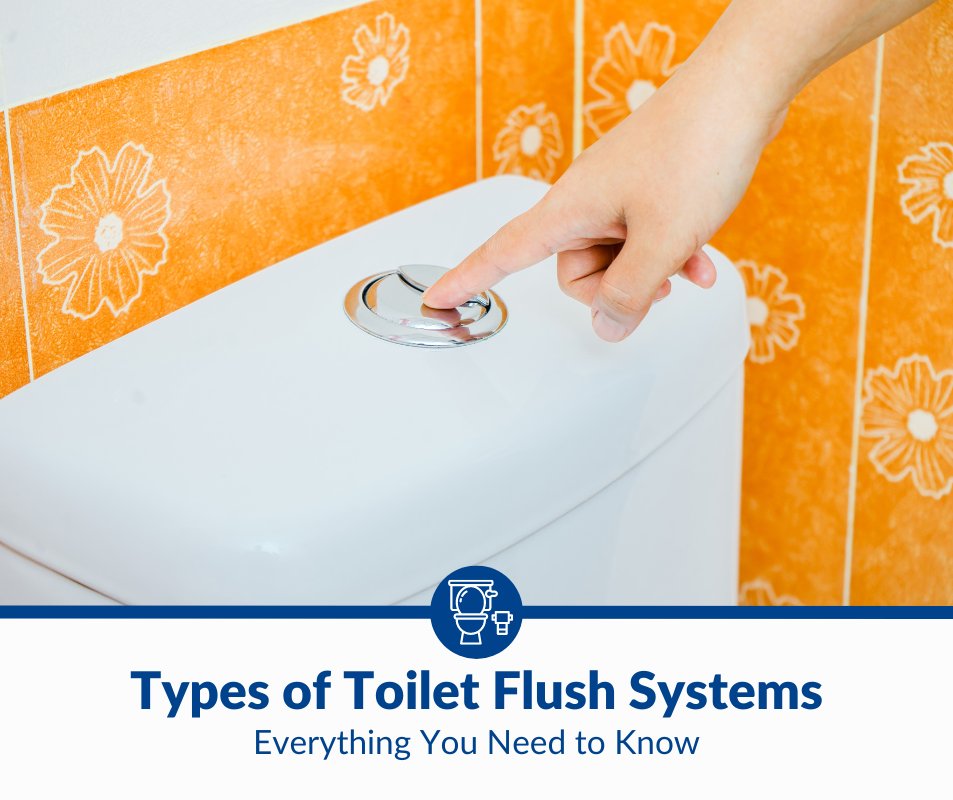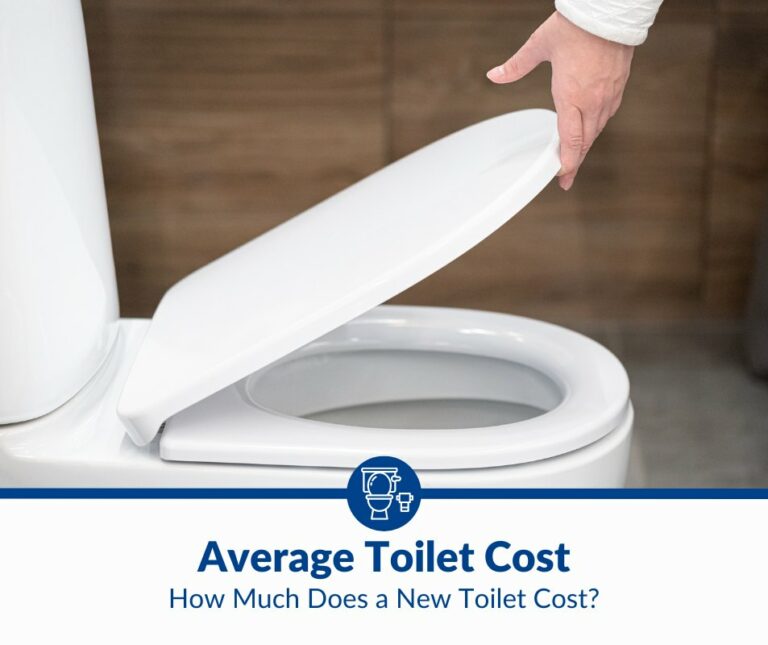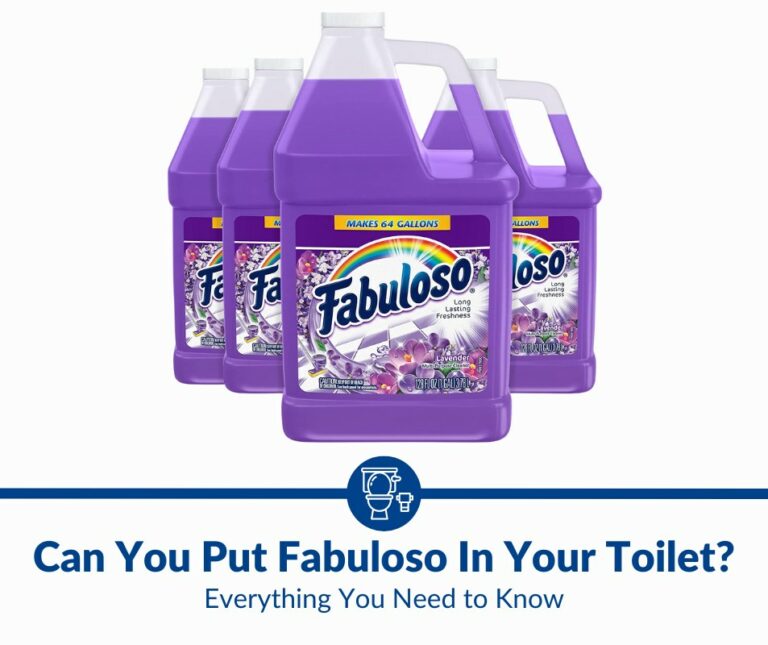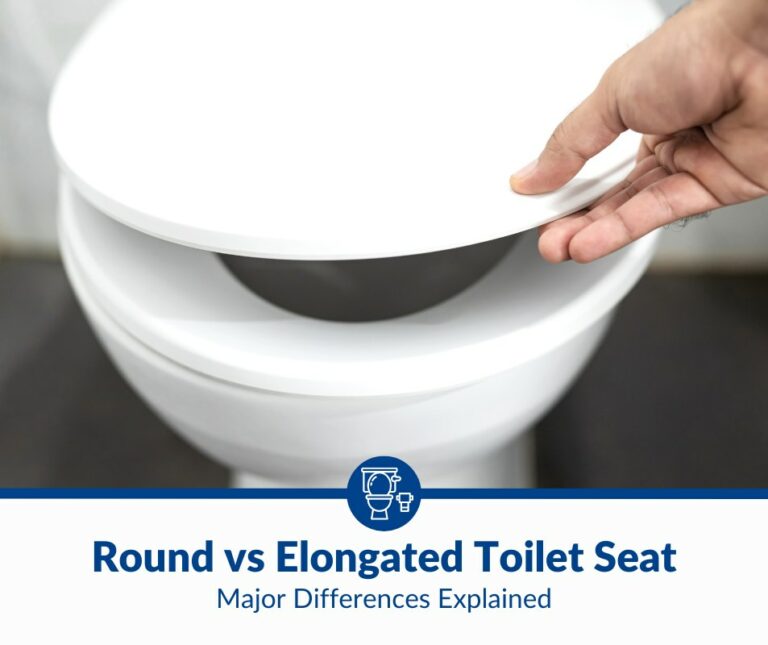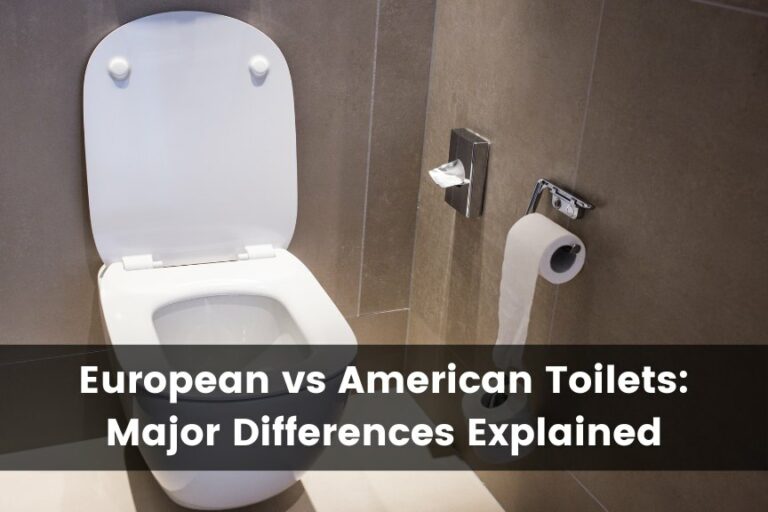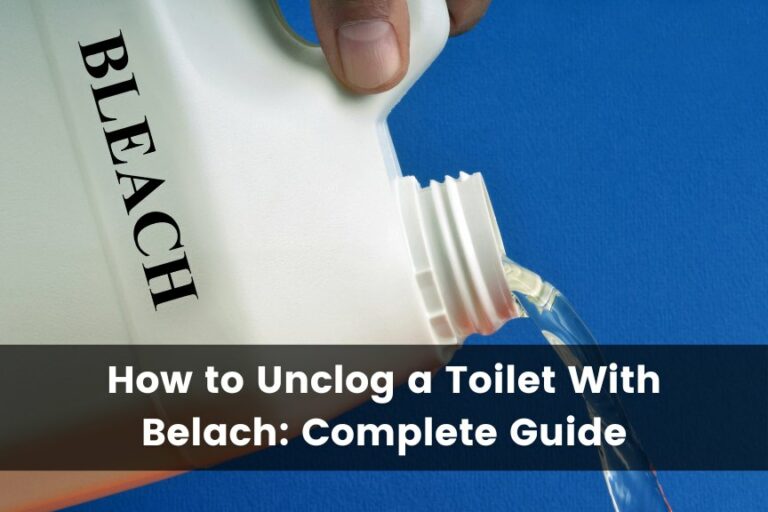Types of Toilet Flush Systems: The Complete Guide
There are plenty of toilet flush system types, all of which use different mechanisms to achieve the same goal. However, some systems are more efficient, quieter, or cheaper. Choosing the right toilet flush system for your home can make a big difference in the way you use your toilet.
The main types of toilet flush systems include pressure-assisted, single flush, double-cyclone, gravity flush, tornado flush, ballcock flush, tower flush, dual flush, siphon flux, and double vortex. The toilet flush system you use determines how much water is used and how long it takes to flush.
In this article, I’ll explain all the toilet flush systems you should know about, how they work, and a list of pros and cons for each. We’ll also provide the information you need to pick the best toilet flush system for your needs.
1. Pressure-Assisted Flush
Pressure-assisted flush systems are high-quality toilets that use compressed air to move large amounts of water very quickly. They’re ideal for any home since they don’t require top-notch water pressure. Furthermore, they’re fairly easy to install since the air comes in a pressurized container that doesn’t require much assembly.
Since pressure-assisted flush systems use air compression to push the water, they don’t use as much water as traditional toilet systems. The additional tank typically takes up a bit more space, which may or may not be a deal-breaker for your home. These flush systems are also a bit noisier due to air release.
Bottom Line: Pressure-assisted toilets are a bit more advanced than traditional toilet flush systems. They use a lot of air rather than requiring several gallons of water to remove debris from the toilet bowl. The increased power production means pressure-assisted toilets are excellent for homes with low water pressure.
Pros
- They flush much quicker than regular flushing systems.
- These toilets don’t require as much water since they use compressed air.
- Additional compressed air means they remove more debris from the toilet bowl.
Cons
- Most pressure-assisted toilets are much louder than regular toilets.
- These flush systems take up a bit more space and require additional tanks to store the compressed air.
2. Single-Flush
Single-flush toilet systems are incredibly common. They use a lever that lifts a chain connected to a flapper. When the chain goes up, it pulls the flapper, which allows plenty of water to pass through the flush system. All the water flushes through the toilet bowl, removing the debris from the bowl and replacing it with more water.
Single-flush toilets have a system determining how much water goes back into the bowl. Many of them use filling tubes that need to be cleaned to help them measure how much water is being added. Single-flush systems are great for people who want simple, traditional toilets without extra parts.
Bottom Line: These flush systems offer efficient water usage and replacement. Furthermore, they don’t require compressed air, multiple flushing knobs, and other components. However, they’re not as quiet as some toilets since they vacuum and push a lot of water for up to 30 seconds or more.
Pros
- They’re simple and as traditional as it gets, which means they’re easier to repair.
- The tank can be small and compact since there’s no need for compressed air.
- They don’t use much water (depending on the fill tube settings).
Cons
- Single flush toilet systems have a lot of parts, which means they need repairs more often.
- They’re not the best choice for homes with bad water pressure or shared plumbing lines.
3. Double-Cyclone Flush
Double-cyclone flush systems are incredibly efficient because they don’t need a lot of water. Furthermore, they actively clean the toilet bowl every time you flush. This means they pair very well with toilet cleaning tabs and other automatic toilet cleaning products. They use one or more holes to cycle water throughout the bowl.
The double-cyclone flush system works by spraying water counterclockwise from right below the toilet seat. This placement ensures that all of the debris is removed. It also provides enough pressure to wash away tough stains and debris. The cyclone effect is designed to imitate real cyclones, hence the catchy name.
Bottom Line: The double-cyclone flush system is a modern take on old-school single-flushing toilets. While they’re built into the bowl, they’re very water-efficient and easy to maintain. They also reduce the cleaning frequency for the toilet bowl, though the dispensing holes need to be cleaned weekly.
Pros
- This flushing system doesn’t require a lot of water.
- It automatically cleans the bowl every time you flush the toilet.
- The holes sit under the seat, so they’re always out of sight.
Cons
- Much like the single-flush toilet system, double-cyclone flush systems aren’t great for places without adequate water pressure.
- The cyclone holes need to be cleaned regularly to prevent bacterial growth.
4. Gravity Flush
Gravity flush systems are very common. In fact, Millennial Homeowner states that gravity flush toilets are the most popular choice on the market. Pressing the lever or button opens the bottom of the bowl, letting all of the debris and water move out of the toilet. This usually amounts to one gallon of water (3.78 L) per flush, which is quite efficient.
These systems use levers that immediately replace the water in the bowl. You’ll be able to flush it right when the bowl finishes filling up, making it perfect for homes with multiple people relying on one bathroom. Gravity flush systems fall under the single-flushing toilet system category, and they’re very similar to ballcock flushing systems.
Bottom Line: Gravity flush toilets are basic and easy to use. There’s nothing fancy about them, but they don’t require a ton of water per flush. They’re not the most water-efficient toilets on the market, though they save plenty on your utility bills compared to ballcock flushing toilets.
Pros
- They use a reliable, steady amount of water per flush.
- The parts are easy to replace and rarely require professional assistance.
- The water fills the bowl quickly, making them great for multi-person homes.
Cons
- They don’t clean the bowl very well.
- These toilet flushing mechanisms rely entirely on your home’s water pressure and gravity.
5. Tornado Flush
Tornado flush systems are very similar to the previously mentioned double-cyclone flushing mechanisms. The only difference is that they use three jets instead of one or two. The additional jet allows for less water to be used per dispenser, but it also means there’s less noise and less water required per flush.
If you choose a tornado flush toilet system, you’ll also notice the holes are a bit smaller. The smaller holes increase the water pressure to get close to that of the double-cyclone systems. It also allows less room for bacterial growth, which is crucial for water pressure and hygienic purposes.
Bottom Line: The tornado flush system is typically seen as a minor upgrade from the double-cyclone flush system. However, it can be well worth the modification for those who want to reduce their toilet’s noise output. It’s also excellent for people with top-notch water pressure going through their toilet plumbing lines.
Pros
- Your toilet will be much quieter with a tornado flush system.
- Multiple jets clean the bowl each time you flush the toilet.
- This toilet mechanism requires less water than most single-flush toilets.
Cons
- The slight water pressure reduction is not ideal for homes with low-pressure plumbing.
- The tornado flush toilet usually costs more than the double-cyclone toilet.
6. Ballcock Flush
Ballcock flush systems work much like single flush systems. They use a ball (also known as a float) that determines how much water needs to be removed or added to the bowl when the toilet flushes. Unfortunately, these old-school flushing mechanisms aren’t very efficient because they won’t work if the ball isn’t at the right level in the tank.
You’ve likely seen ballcock flush systems on toilets in older homes. However, they’re very uncommon in restaurants because they require more maintenance than usual. If any of the parts aren’t aligned correctly, the toilet won’t flush, resulting in inconvenience and extra maintenance costs.
On most other toilets, a damaged or misaligned part would slightly reduce the flushing power, but not altogether.
Bottom Line: Ballcock flush toilets are on the out. They’re not as effective or efficient as other toilets, and they’re more prone to error. However, they’re relatively inexpensive, easy to work on, and they’ve been used for several decades. They might be a good option for people with good water pressure who want tried and true toilets.
Pros
- They’re easy to work on because they’re familiar.
- Ballcock flush toilets are much cheaper than most modern, advanced toilets.
Cons
- They’re completely useless if there’s not enough water in the tank.
- These toilets aren’t considered water-efficient.
- They don’t clean the toilet bowl very well.
7. Tower Flush
Tower flush toilets use as much water pressure as possible without requiring a pressure-assisted air tank. They spray water from every direction under the toilet seat, completely cleaning all angles. The complete coverage means they don’t need to use much water compared to most single-flushing toilets.
A tower flush mechanism lifts up when you flush the toilet, which means it releases all of the water at once. Unlike toilets with flappers in the tank, the water pressure doesn’t taper. This instantaneous flushing pressure is a top choice for those with below-average water pressure because it builds up naturally.
Bottom Line: Tower flush systems add the power of a pressure-assisted mechanism with the compact size of traditional ballcock flush toilets. They’re not as common because they’re not widely available in some countries, but they’re more than worth the investment. These toilets drastically increase the tank’s water pressure.
Pros
- These toilets produce a lot of flushing strength without compressed air.
- They clean the toilet from all sides instantly.
- There’s no need for a flapper or a float in the toilet’s tank.
Cons
- Tower flush systems are typically a bit expensive.
- The tank can be difficult to clean and work around.
8. Dual Flush
Dual-flush systems are incredibly unique because they let you control how much water is used with each flush. Toilet Haven reports that dual flush systems have a setting for liquids and a setting for solids. On most dual flush systems, pressing the lever up will use half of the water than usual (sometimes less). Pushing it down uses a regular amount of water.
Most people choose dual-flush systems because they save a lot of water. Using less water reduces your utility bills, but it also means your toilet is less disruptive to other water sources in your home. Additionally, it makes the toilet much quieter when you’re using the liquid-flushing lever setting.
Bottom Line: Dual-flush systems are some of the best ways to save money and reduce your water usage with each flush. Not only are they financially beneficial, but they’re also much quieter. While some dual-flushing toilets use buttons, many rely on levers to control the amount of water used.
Pros
- You can control how much water flushes.
- These toilets are usually much quieter.
- You’ll save a lot of money by using less water.
Cons
- If you choose a dual flush system with a button, you’ll need to ensure it’s not stuck under an overhanging counter.
- These systems have a few more moving parts than single-flush toilets.
9. Siphon Flush
Siphon flush toilets use a plunger that creates a lot of pressure. The pressure buildup siphons water into the tank, which uses gravity to flow into the tank and through the toilet trap. The toilet trap leads to the sewer, which disposes of the waste. These toilets are very similar to those with flappers, but the plunger is a bit more effective at filling the toilet bowl.
One thing to remember when using a siphon flush system is that the plunger must be completely flush with the tank inlet. If the plunger is slightly misaligned, it won’t create enough suction to flush the toilet. This downside can make it a bit less appealing to people who don’t want to worry about toilet maintenance.
Bottom Line: The siphon flush toilet is an upgrade over the ballcock toilet, but it’s not as advanced as dual flush toilets, tower flush toilets, or dual-cyclone toilets. However, it can be useful for those who prefer traditional flushing mechanisms with a little extra pressure (especially if you have subpar plumbing).
Pros
- These toilets are more effective than regular single flush toilets.
- They work very easily and repair quickly.
- They use gravity and a plunger for a two-part flushing process.
Cons
- A misaligned plunger can make this toilet flushing system useless until it’s realigned.
- They’re not much of an improvement over traditional toilets, so the price hike might not be worth it for some people.
10. Double-Vortex Flush
Double-vortex toilets are American Standards’ answer to double-cyclone toilets. They’re very similar in the sense that both flushing mechanisms spray water from two spouts tucked under the toilet seat. However, a double vortex flush system also sprays a bit of water directly into the bowl, providing extra cleaning pressure.
Much like a double-cyclone flush system, double-vortex flush toilets are much quieter than traditional toilets. Not only do they require less water, but they distribute the pressure throughout the bowl. The water sprays against the bowl rather than outward, which reduces the noise from splashing when you flush the toilet.
Bottom Line: This toilet is quiet, efficient, and easy to use. While it relies on your home’s water pressure, it’s more than effective in cleaning the bowl and removing as much debris as possible. Despite its impressive cleaning power, it doesn’t use much water. This results in reduced monthly water bills.
Pros
- These toilet flush systems are very efficient because they remove a lot of waste and debris.
- They use a lot less water, saving hundreds of gallons annually, and saving you a lot of money on your water bill.
- They provide a bit more self-cleaning power than double-cyclone toilets.
Cons
- These toilet mechanisms are usually a bit pricier (but you get what you pay for), and it could be worth it in the long run.
- The installation process is a bit more in-depth, and the vortex spouts can’t be replaced without changing the bowl.
What Type of Toilet Flush Is Best?
The pressure-assisted toilet flush is the best mechanism because it provides more flushing strength than any toilet without using a lot of water. They have built-in compressed air tanks that do most of the work, so you don’t need top-shelf water pressure for high-quality flushing power.
Courtesy Plumbers point out that pressure-assisted flush systems save money by using less water, which means you’ll get more flushing strength without spending more in the long run. While these toilets often cost slightly more than the average toilet flushing system, they pay themselves off down the road.
If you’re looking for a pressure-assisted flush system, try the American Standard Cadet Pressure-Assisted Toilet (available on Amazon.com). This toilet uses 1.6 gallons (6 L) per flush, making it very efficient. Furthermore, it has a unique EverClean material that prevents debris and waste material from building on the inside of the bowl or the seat.
Upgrading your toilet’s flush system can be tedious, so we suggest replacing the whole toilet. Fortunately, replacing a toilet is quite simple.
Follow this process if you want to switch to a different flushing toilet:
- Turn off the water line going to the toilet.
- Disconnect the plumbing from the toilet and close the water valve to prevent it from dripping.
- Remove the retaining caps, then unscrew the retaining bolts holding the toilet to the ground.
- Set the old toilet aside, then place the retaining bolts through the new toilet’s base and into the ground.
- Connect the water supply, open the valve, then turn on the water going to the new toilet.
Before changing your toilet or switching the flush system, consider how the style might affect the flushing strength below.
What Makes a Toilet Have a Stronger Flush?
Toilets have stronger flushes when they’re suited for the water pressure in a home. Choosing the right type of flushing system to accommodate your house’s water pressure can make a world of difference. Using compressed air can also greatly improve a toilet’s flushing strength and efficiency.
So, how can you find the toilet flushing system that provides the best flushing power for your home? Look for these five factors:
- Consider your home’s water pressure. If your home has excellent water pressure, you can choose any of the aforementioned flushing systems. Poor water pressure usually requires extra help, such as a pressurized flush mechanism. Compressed air helps move the water rather than solely relying on your home’s water supply.
- Pressurized flushing systems always provide a stronger flush. Even if you have high-quality water pressure, you can upgrade to a pressurized system. While people with good water pressure don’t need these systems, there’s no doubt that the water’s PSI will increase every time you flush.
- Using more water doesn’t always improve the flushing pressure. For example, a double-cyclone toilet usually uses less water than a single flush system, but it provides more cleaning action. It can also remove more debris from the toilet since the cyclone pattern creates a natural suction at the bottom of the toilet bowl.
- Adjusting the float or chain can improve the flushing efficiency. If you have a ballcock flush system or another form of a single flush toilet, you can adjust the height of each part for better results. The chain should be snug, but there needs to be a little bit of wiggle room to let the flapper open and close all the way.
- Clean toilets flush with more strength, regardless of which flushing system you use. Make sure you clean your toilet weekly to remove debris buildup that can hinder the flushing system’s performance. This is especially important for toilets that have their water sources positioned under the seat or under the lid.
Older homes with multiple water sources on the same plumbing lines will usually have weaker flushes if they’re used simultaneously. For instance, your toilet won’t flush as strongly if there are showers, sinks, laundry machines, or dishwashers running at the same time. This is why the water supply weakens for a few seconds after flushing the toilet.
Which Type of Toilet Flush System Should You Choose?
You should choose your toilet flush system based on your budget, water pressure, and preferred amenities. Some toilets offer quieter flushing that could be appealing to those who don’t have fans in their bathrooms. On the other hand, you might prefer easier maintenance and auto-cleaning components.
Ask yourself these questions to know which flush system is best for you:
- Does your current toilet setup flush slower than two or three seconds? If so, you’ll likely need more pressure. Slow-flushing toilets can cause clogs and other plumbing issues. Switch to a pressure-assisted flush system to ensure the toilet removes all water from the bowl in three seconds or less.
- Do you care about your toilet’s noise output? If you do, then you should avoid pressure-assisted flush systems and tower flush systems. Both of these mechanisms build up a lot of pressure, which is great for cleaning the bowl but bad for their noise output. Dual flushing and double vortex flushing are usually the quietest options.
- Would you prefer single flushing systems or dual flushing systems? Single-flushing systems are extremely common and easy to work on. They use one type of flush to remove all of the debris. On the other hand, dual flushing systems have an option that uses a lot less water for urine since it doesn’t need as much flushing power.
- Will you add a bidet to your toilet? If so, consider the placement of your flushing system. Double-vortex and double-cyclone flushing systems take up a lot of space in the toilet. However, a few bidet attachments are out of the way enough for these mechanisms. Consider if you want a bidet before choosing the flushing system.
- What is your toilet cleaning routine? You can opt for a tornado, double-vortex, or double-cyclone toilet if you need more help cleaning your toilet. All of these flushing systems are compatible with toilet cleaner pads and dispensers, too. We highly suggest cleaning the water nozzles or dispensers weekly, though.
Once you’ve chosen your toilet flushing system, you can decide if it’s right for every bathroom in your home. Keep in mind that you can have different flushing systems in each bathroom. For example, you might have one bathroom with better water pressure that could use a ballcock system and another that needs extra flushing strength from a pressure-assisted flush toilet.
Final Thoughts
Your toilet flush system can be upgraded to almost any type of the list. Changing the flush system will help you save water while keeping your toilet as clean as possible. Whether you prefer the water-saving dual flush system or the traditional gravity flush system, there’s a choice for everyone.

